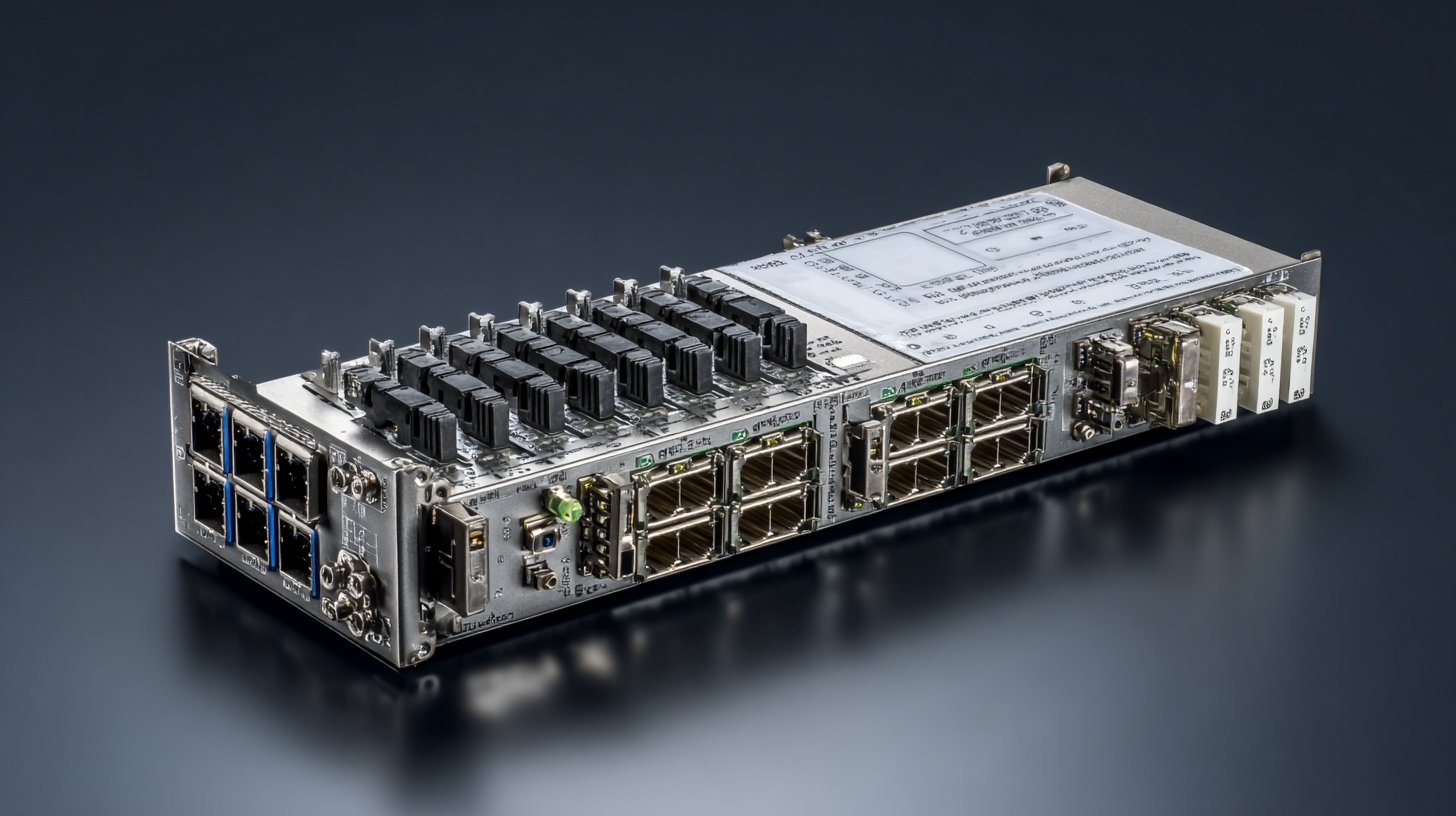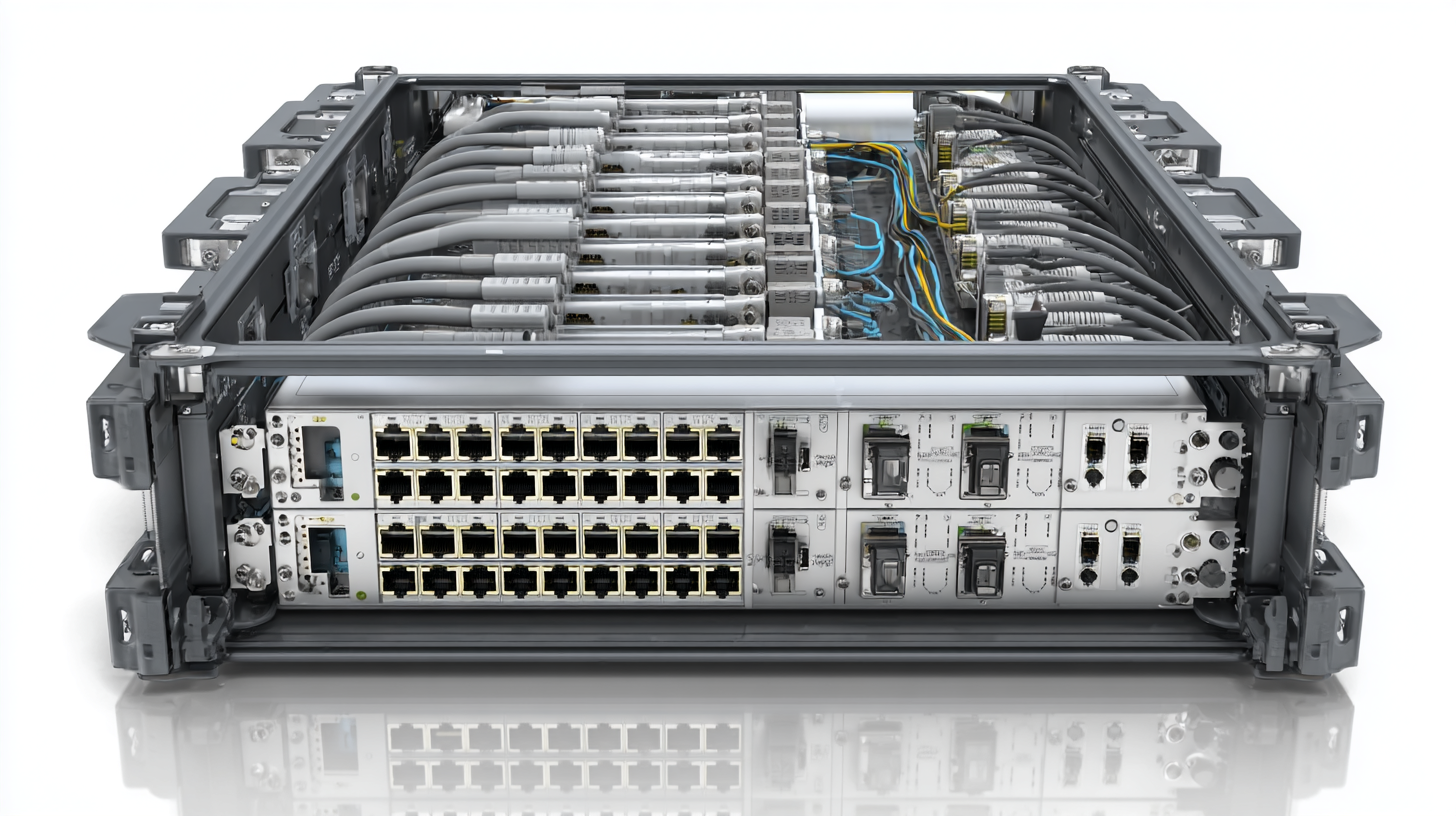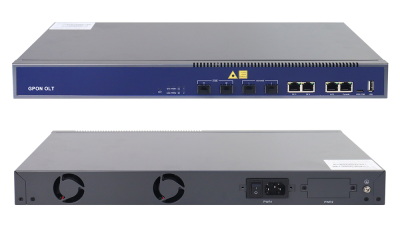Exploring Alternatives to Gpon Olt Sfp for Enhanced Network Performance
Table of Contents
- What Are GPON and Its Limitations in Modern Networking?
- Understanding Alternative Optical Transceiver Technologies for OLTs
- Comparing Cost-Efficiency: GPON vs. XGS-PON vs. NG-PON2
- Impact of Emerging Standards on Network Performance and Scalability
- Case Studies: Successful Implementations of Non-GPON Solutions
- Future-Proofing Your Network: Trends in OLT Technology Adoption
- Unlocking High-Speed Connectivity: Exploring the OLT-G2V Cost-Effective 1U Minimalist 10GE SFP+ GPON OLT Solution
- FAQS
- Conclusion
- Related Posts
As the demand for super fast internet keeps growing around the world, network providers are starting to look for alternatives to the traditional GPON OLT SFPs. They want to boost network performance and keep up with what users are expecting these days. Industry reports suggest that the global Gigabit Passive Optical Network (GPON) market could hit around $12.28 billion by 2025 — that’s mainly because people want more bandwidth and quicker data transfers. Even though GPON OLT SFPs have been the backbone of fiber optic tech for ages, new options are popping up that offer better performance and more flexibility. Hangzhou Softel Optic Co., Ltd., a major player in HFC broadband optical transmission gear, is well aware of this changing scene and is all about pushing forward with innovative R&D for CATV systems. By tapping into the latest optical fiber advancements, they’re working to meet the ever-changing needs of network infrastructure with versatile solutions that go beyond the traditional GPON setups, helping pave the way for future-proof connectivity.

What Are GPON and Its Limitations in Modern Networking?
You know, GPON—short for Gigabit Passive Optical Network—has pretty much been the go-to tech for fiber optic internet, especially when it comes to delivering fast broadband. It’s great at giving users those really impressive speeds and efficiency. But, honestly, it’s not without its flaws. As more and more data needs are popping up, people are starting to notice that GPON just can’t keep up anymore. A report from the International Telecommunication Union (ITU) predicts that by 2025, the amount of data people want at home could go up to 30 Gbps—way beyond what the usual GPON setups can handle, which top out around 2.5 Gbps downstream. Crazy, right?
Plus, because GPON shares its bandwidth among users, it can get pretty crowded, especially in busy neighborhoods. Recent market research from Grand View Research points out that all the gadgets connected through IoT, plus streaming services, are really pushing the existing GPON infrastructure to its limits. It just doesn’t seem capable of juggling all those high-bandwidth demands at once. That’s why more network operators are starting to look into alternatives—things like Active Ethernet or Next-Generation Passive Optical Networks (NG-PON). These newer options promise much higher bandwidth and a way more reliable experience to handle the complex, data-heavy needs we’re seeing these days.
Understanding Alternative Optical Transceiver Technologies for OLTs
In today’s world of telecom, it’s pretty important to get a grip on the different optical transceiver technologies for Optical Line Terminals—yeah, those are what basically keep the network running smoothly. While GPON is still the go-to standard, newer tech like WDM-PON and XG-PON are really starting to turn heads. I read in a report from the Global Industry Analysts that the WDM-PON market worldwide might hit around $5.24 billion by 2026. That’s pretty impressive, and it shows how much folks are into this tech now because it can boost bandwidth big time and make better use of what’s already out there infrastructure-wise.

Plus, with everyone pushing for faster data speeds and lower latency, we’re definitely gonna see more XG-PON in action. Industry forecasts suggest that XG-PON’s growth rate could be around 15.8% annually from 2021 through 2026—that’s no small feat. By using these advanced optical transceivers supporting WDM-PON and XG-PON, OLTs can basically deliver gigabit speeds over longer distances, which is pretty awesome. This shift isn’t just about keeping up with the demand for more bandwidth; it’s also about sparking new innovations in fiber network deployment, paving the way for a future where high-capacity broadband is just the norm.
Comparing Cost-Efficiency: GPON vs. XGS-PON vs. NG-PON2
So, when it comes to boosting network performance, everyone’s been talking about how different passive optical network (PON) technologies stack up. It’s kind of a big deal now, especially since operators are trying to figure out what’s most cost-effective. You’ve probably seen more folks adopting XGS-PON and NG-PON2 lately — they’re practically the new kids on the block compared to the classic GPON. These newer techs aren’t just about faster speeds; they also scale better, which is super important as bandwidth needs keep climbing. Industry forecasts definitely show that GPON still has a strong future until at least 2037, but solutions like XGS-PON are definitely gaining more prominence.
And speaking of recent developments, a lot of companies have been working on their own 10G-PON chipsets. It’s pretty exciting because these innovations, especially the ones that work smoothly with common ONU MAC systems, suggest we’re moving towards more efficient, faster data transmission. Plus, a closer look at the market reveals that as applications like FTTH and FTTB grow, the shift from GPON to newer PON tech isn’t just about cranking up speeds. It’s also about trimming operational costs, which can really help providers improve their bottom line. Looking ahead, it’s pretty clear that the PON scene is evolving fast to keep up with our increasingly connected world.
Impact of Emerging Standards on Network Performance and Scalability
As the demands on networks keep climbing, it's become pretty clear that we need to look for alternatives to the traditional GPON OLT SFP tech if we really want to boost performance and scalability. Have you heard about newer standards like XGS-PON and NG-PON2? They’re pretty exciting—offering data rates that can hit 10 Gbps or even more. I recently came across a report from the Fiber Broadband Association, and it projects that the global fiber optic market might hit around $71 billion by 2025. That really shows how the industry is shifting towards these cutting-edge solutions.
Hangzhou Softel Optic Co., Ltd. is definitely in a good spot to help push this evolution forward, thanks to their strong R&D capabilities in HFC broadband optical transmission gear. By blending the latest broadcast and communication tech, Softel’s innovations can make the most of these emerging standards—improving network reliability and efficiency. Having a solid network setup isn’t just about handling bigger bandwidth now; it’s about building something scalable that can adapt quickly when user demands change.
Pro tip: When you’re looking at alternative tech options, take a close look at your current setup—does it jive with these new standards? And think about your future needs too, so everything can connect smoothly. Keeping an eye on industry updates is also a smart move to stay competitive when deploying high-performance networks.
Another tip: Work with tech providers who put a heavy emphasis on R&D. Continuous innovation is key—it helps you stay ahead of the curve and makes the whole network perform better over time.
Case Studies: Successful Implementations of Non-GPON Solutions
Lately, many network providers have been looking into options beyond the usual GPON OLT SFP setups, just to get better performance and efficiency. There are quite a few real-world examples showing that these alternative solutions can really deliver. For example, a 2022 report from the Telecommunications Industry Association revealed that networks using Active Ethernet (AE) technology can achieve up to 30% faster speeds than traditional GPON, especially in busy city areas. The cool thing about AE is its point-to-point setup, which means each user gets dedicated bandwidth. That leads to better service quality and less lag overall.
And it’s not just that—there’s also NG-PON2 making waves. A survey by the Fiber Optic Association found that providers switching over to NG-PON2 saw operational costs drop by around 40%, plus customers seem much happier with the service. With the ability to support gigabit speeds and handle multiple services at once, NG-PON2 is quickly becoming a serious competitor to the usual GPON systems. All these success stories really point to a major shift in how telecom networks are evolving—making it easier for providers to meet the rising demand for reliable, high-speed internet connections.

Future-Proofing Your Network: Trends in OLT Technology Adoption
As technology keeps moving forward, it's become more and more important to future-proof our networks. You know, that’s where Optical Line Terminal (OLT) tech really shines—helping to boost network performance and keep things running smoothly. With all the exciting progress in optical fiber tech, telecom companies are under a lot of pressure to handle huge amounts of bandwidth and stay connected. Looking into alternative options beyond GPON OLT SFP tech isn’t just fixing current hiccups; it’s also setting things up nicely for future growth.
Just like how other industries, like biopharma, are modernizing with AI and better data use, the telecom world is also stepping up with innovative solutions. When companies jump on the latest OLT tech, they can really see an uplift in productivity and the quality of service they provide. Thinking ahead and embracing new technologies and best practices means faster improvements—better user experiences and more efficient operations. Overall, integrating these cutting-edge systems sets the stage for a network that’s robust, flexible, and ready to handle whatever comes next.
Exploring Alternatives to GPON OLT SFP for Enhanced Network Performance
This chart illustrates the performance impacts of various alternatives to GPON OLT SFP technology, showing parameters such as latency, bandwidth, and scalability to highlight trends in OLT technology adoption.
Unlocking High-Speed Connectivity: Exploring the OLT-G2V Cost-Effective 1U Minimalist 10GE SFP+ GPON OLT Solution
In today's rapidly evolving digital landscape, the demand for high-speed connectivity is higher than ever. The OLT-G2V, a cost-effective 1U minimalist 10GE SFP+ GPON OLT solution from Softel, meets this demand by catering to small-scale applications that require robust and efficient networking capabilities. With its innovative design that supports up to 10 gigabits per second via SFP+ uplinks, the OLT-G2V offers a significant boost in data transmission, making it an attractive option for ISPs and enterprises looking to enhance their service offerings.
According to industry reports, the Global GPON Market is projected to grow at a CAGR of 12.3% from 2021 to 2028, driven by the rising need for broadband connectivity in urban and rural areas alike. The OLT-G2V stands out by not only facilitating this growth but also by providing a lower total cost of ownership (TCO). By minimizing hardware requirements and maximizing performance, businesses can achieve greater efficiency without incurring excessive costs. This aligns perfectly with the increasing trend of small and medium-sized enterprises (SMEs) aiming to leverage next-gen networking solutions to remain competitive in an increasingly crowded market.
Furthermore, Softel’s commitment to quality and innovation ensures that the OLT-G2V is engineered for reliability and scalability. With a minimum order quantity (MOQ) of just one unit, even small businesses can invest in advanced technology without the burden of hefty financial commitments. As organizations continue to seek out solutions that drive digital transformation, the OLT-G2V emerges as a viable solution to fuel connectivity needs in a cost-effective manner.
FAQS
: GPON stands for Gigabit Passive Optical Network and is primarily used for delivering broadband services, offering high speeds and efficiency in fiber optic communications.
Conventional GPON systems typically max out at around 2.5 Gbps downstream, which is inadequate given the projected demand for data capacity that could reach up to 30 Gbps per home by 2025.
GPON’s shared bandwidth architecture can lead to bottlenecks, especially in densely populated areas, as it struggles to handle simultaneous high-bandwidth demands from multiple users and devices.
Alternatives like Active Ethernet and Next-Generation Passive Optical Networks (NG-PON) are being considered, as they promise greater bandwidth and better performance to accommodate modern data applications.
Emerging standards such as XGS-PON and NG-PON2 offer data rates up to 10 Gbps and beyond, which can significantly enhance network performance and scalability to meet increasing demands.
Future-proofing networks is essential to accommodate the growing demands for bandwidth and connectivity, and adopting advanced Optical Line Terminal (OLT) technology can help enhance network reliability and performance.
Organizations should assess their infrastructure for compatibility, stay updated with industry advancements, and collaborate with technology providers focused on R&D to ensure they are deploying high-performance network solutions.
Ongoing innovation is crucial for adapting to new standards and overcoming performance challenges, enabling service providers to improve user experience and operational efficiency through the integration of advanced technologies.
Conclusion
Hey there! So, in today's fast-changing world of networking, we've started hitting some limits with GPON OLT SFP technology, which has got us thinking about other optical transceiver options that could really boost network performance. In this post, I want to chat a bit about what’s holding GPON back in modern setups and explore newer tech like XGS-PON and NG-PON2. We’ll also look into whether these alternatives are actually cost-effective compared to the traditional GPON systems and how the new standards might influence how scalable and efficient our networks can get.
Plus, I’ll share a few real-world case studies showing how switching away from GPON has brought some pretty cool benefits and innovations in OLT tech. As a company specializing in fiber optic solutions—Hangzhou Softel Optic Co., Ltd.—we’re super excited about being part of this shift. It’s all about making sure our networks are ready for what’s coming next, no matter how much things keep evolving.
Related Posts
-

China's Resilient Growth in Manufacturing With Best Gpon Olt C++ Amidst US China Tariff Challenges
-

Innovative Olt V Solution Gpon Specifications You Need to Know in 2023
-

7 Compelling Reasons to Choose Odn Gpon for Your Global Procurement Needs
-

How to Choose the Best OLT Ufiber for Optimizing Your Network Performance and Reducing Costs
-

Unlocking Global Opportunities with Best Xgs Pon from China's Superior Manufacturing
-

Global Excellence in Gpon Ont Olt Manufacturing from China Leading the World in Connectivity Solutions


